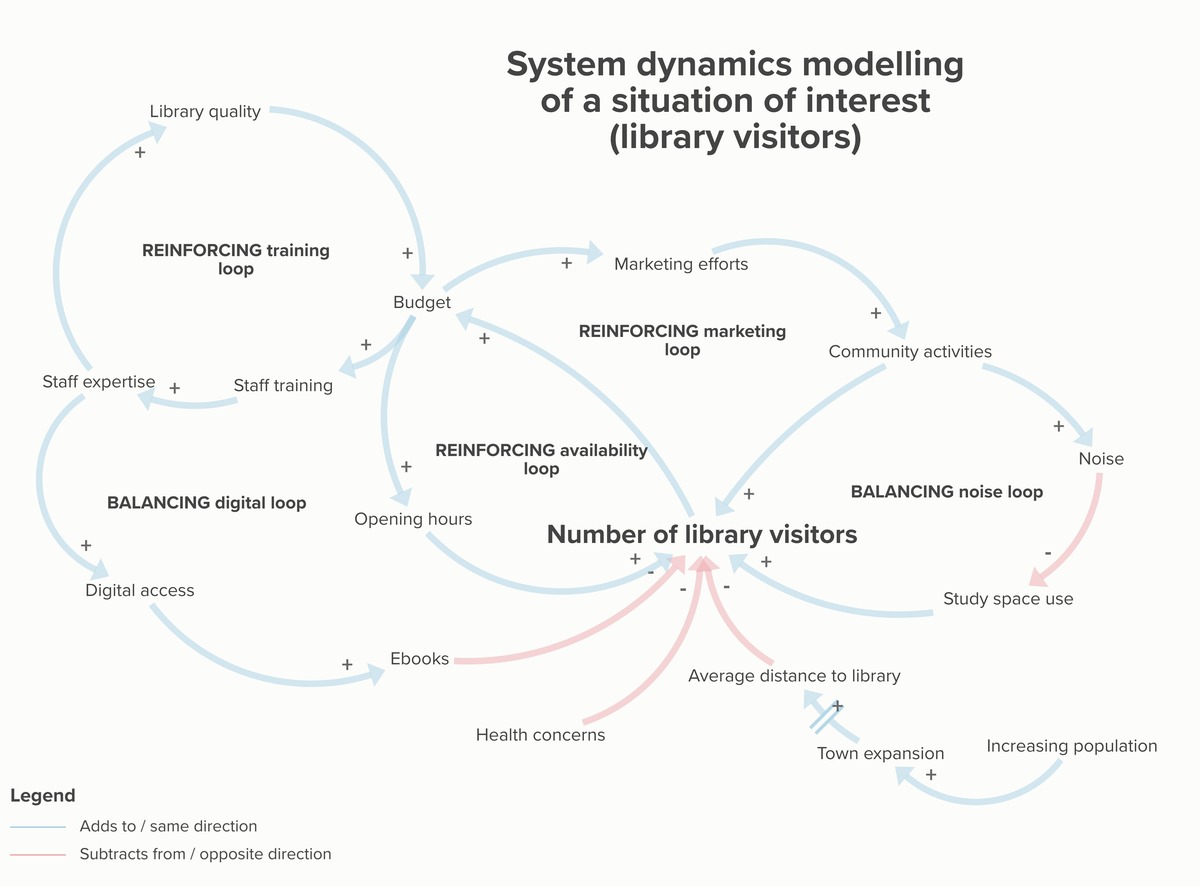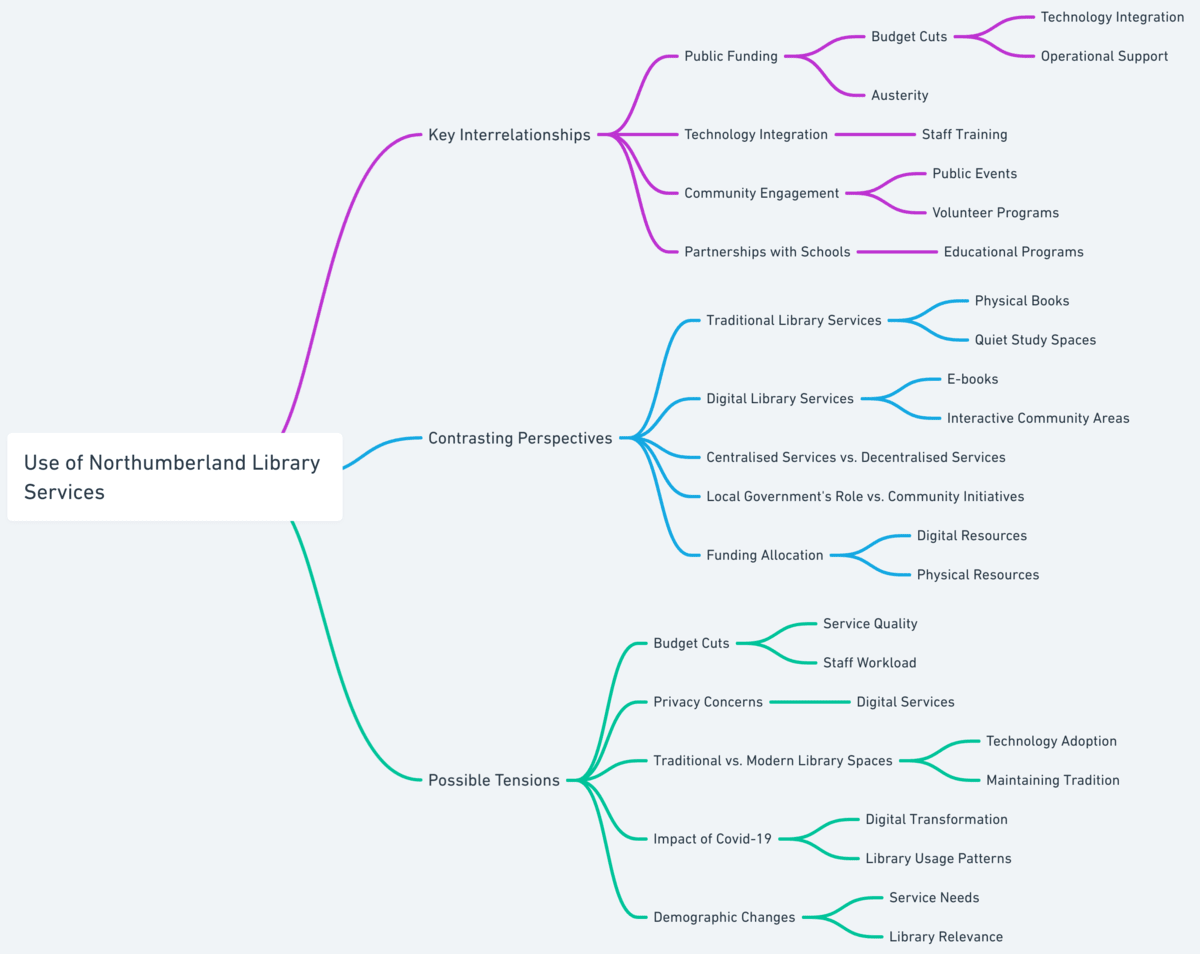TB871: Metaphorical linguistic expressions
Note: this is a post reflecting on one of the modules of my MSc in Systems Thinking in Practice. You can see all of the related posts in this category.
Activity P2.9 asks us to identify “metaphorical linguistic expressions used by stakeholders when describing or making sense of situations” in my area of practice. I’m focused on the use of libraries, in general but particularly in Northumberland. More specifically, issues affecting their use.
In general, I think it’s fair to say that the majority of the population think that libraries are quiet, unexciting places. So if pushed for a metaphor, we might find words like ‘sanctuary’ or ‘refuge.’ Librarians and those who love books (like me!) might see things differently, and use terms such as ‘diving into research’ or ‘unlocking a treasure trove of information’ which makes things sound a bit more exciting.
In addition to the Dewey decimal system, libraries tend to have collections of books which have been arranged around a theme. This ‘curation’ by librarians is akin to what art galleries might do with works of art, and putting books on display treats them as less of a commodity and more like art works.
Libraries are more than just about physical books, though, and as I sit in Morpeth library there is a corner dedicated to ‘Business & IP Centre North East’ whose materials enjoin visitors to ‘Join a thriving business community in your local library.’ Although I’ve only ever seen someone sit there bored, scrolling through their phone, waiting for people to arrive, I suppose the metaphor in use is something akin to knowledge being an ‘engine of growth.’
Some libraries play an important role in teaching digital skills to the community. This can be important particularly if people need to be able to claim benefits or look for jobs, which these days are both digital-first activities. Council members or senior administrators might therefore talk about ‘investing in digital infrastructure’ and then ‘harvesting data’ from users to improve services.
So we have a range of metaphors in play with libraries: everything from art galleries, to construction, to agricultural metaphors. As Laura and I have explained on the WAO blog, metaphors are powerful things which can unlock mental models in audiences that lead to different actions being taken. I can’t help but think that library services could do a better job about being more intentional about the metaphors they use in their communications.


